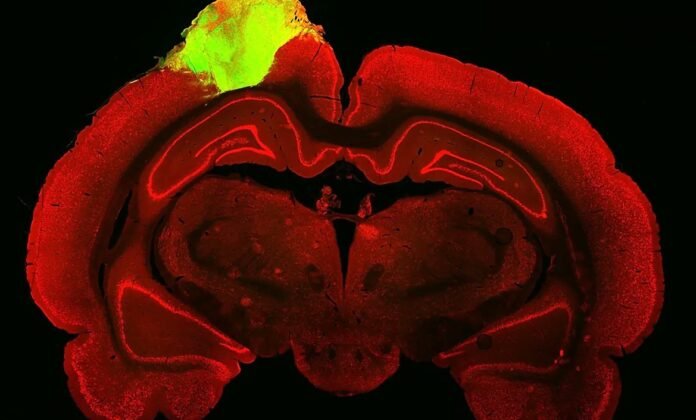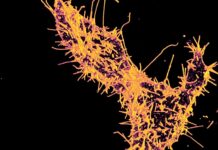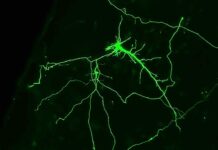Introduction: A New Solution for Treating Brain Injuries
The complexity of treating brain injuries has long been a challenge for medical professionals. But now, a new study published in Cell Stem Cell reveals a potential solution – human brain organoids. In this groundbreaking study, scientists successfully transplanted these organoids into rats with brain damage, achieving a significant breakthrough in brain injury research.
Organoids: The Better Alternative to Loose Cells
Unlike other organs, the brain has a highly structured composition, making it difficult to repair or restore its function. Enter organoids – three-dimensional tissue cultures grown in vitro from stem cells. These innovative structures can mimic the structure of the brain with specific growth factors and other molecules, offering the potential to integrate better into the brain than loose cells.
The Experiment: Connecting Organoids with Rat Brains
Researchers at the University of Pennsylvania Perelman School of Medicine conducted the experiment. They removed a small section of the visual cortex from adult rats and transplanted a grain-of-sand-sized human brain organoid into the empty chamber. They monitored the rats’ brains every month for three months to evaluate the organoid’s survival and integration with the rest of the brain. The results were impressive. The organoids were vascularized by the rats’ brains and integrated seamlessly into the visual system. Furthermore, when the team showed the rats a flashing visual stimulus, the organoids’ neurons activated, indicating that they were performing a function in the visual cortex.
Further Research: Refining the Organoids
Despite the promising results, much more research is necessary before organoids can be used as a treatment method for brain injuries. Scientists need to refine the structure of organoids further and better understand the specific factors that control organoid integration. Additionally, since organoids are added to mature brain tissue, synthetic growth factors must be added to match the growth of the host brain. Nonetheless, the success of this study is the first step towards using organoids as a treatment for brain injuries.
Conclusion: The Future of Brain Injury Treatment?
The groundbreaking study on the transplantation of human brain organoids into rats with brain damage has created hope for treating brain injuries. With continued research and refinement of organoids, they may become a viable treatment option for individuals with brain injuries in the future. This breakthrough has set the stage for the development of innovative treatments that could help many people recover from brain injuries.
Google News | Telegram















